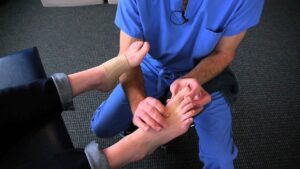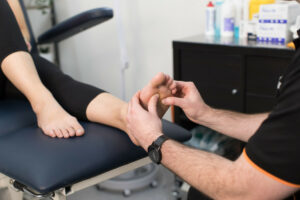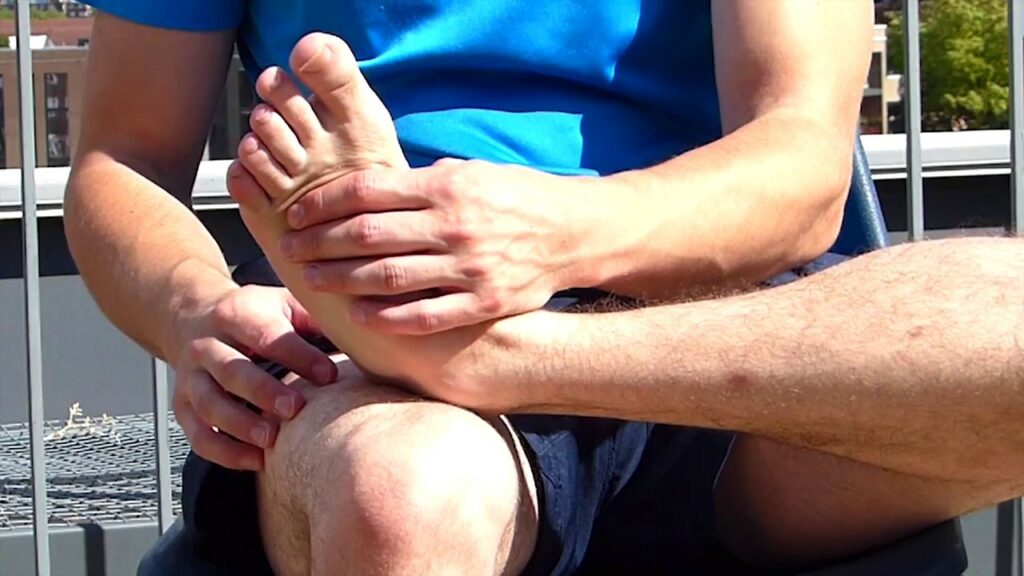Hallux valgus is a common disorder that affects the feet. It’s characterized by a bent or cocked (valgus) ankle, which makes it difficult to walk and function normally. If you suffer from hallux valgus, you may be looking for ways to alleviate your symptoms. In this blog post, we will provide you with a physical therapy guide to bunion (hallux valgus). We will discuss the different types of treatments available and how they can help you regain your health and mobility.
Contents
What Is Bunion (Hallux Valgus)?

A bunion (Hallux Valgus) is a condition where the big toe joint is rotated out of alignment. This can cause pain and pressure on the front of the foot. Bunion treatment includes physical therapy, which can help to realign the toe joint and relieve pain. The signs and symptoms of a bunion can vary, so it is important to see a doctor if you experience any of the following:
- extreme pain when standing or walking
- redness, swelling, and stiffness in the toe area
- a bump or prominence on the front of your foot
If left untreated, a bunion can gradually worsen and may require surgery.
Treating a bunion can be a challenge, but with the help of a healthcare professional, you may be able to manage the condition. There are many types of bunion treatment available, so it is important to discuss your options with a specialist.
Physical Therapy For Bunion (Hallux Valgus)
Hallux valgus, or bunion, is a condition in which the big toe is turned inward due to abnormal stretching and overuse of the ligaments that support it. The result is pain and inflammation around the joint. Physical therapy can help relieve pain and improve function.
The goal of physical therapy for the bunion is to restore balance and function to the foot by reducing inflammation, improving the range of motion, and restoring strength and flexibility. Treatment typically includes exercises, heat, ice, ultrasound, and massage.
Exercises for hallux valgus may involve using acrylic pads or weights to stretch the toe joint out gradually. This type of exercise should only be done under the supervision of a doctor or Physical Therapist as it can cause injury if not done correctly. Other exercises that may be prescribed include taping the toe up so that it cannot move and ankling (a method involving wearing special shoes that force your ankle to dorsiflex [pulling your heel up]). Ankling can also be done using resistance bands or elastic tubing around the ankles.
Physical therapy for a bunion typically lasts six weeks but can last longer depending on the individual’s symptoms. Some patients may need additional sessions after six weeks to continue seeing improvements.
Types of Physical Therapy For Bunion (Hallux Valgus)

There are several different types of physical therapy for bunion (hallux valgus). The goal of treatment is to improve the function of the joint and to diminish the symptoms. This may involve exercises, splints, and medication.
Exercises:
One type of exercise that may be helpful for bunion (hallux valgus) is foot elevation. This involves raising one leg so that the toes are pointed straight upward. Foot elevation can be done on a stair step, in a stationary pool, or using a boom chair.
Exercises that use the heel and toe pressure points may also help improve bunion (hallux valgus) function. These exercises include dolphin swimming with moderate resistance and hammer curls with moderate resistance on a physioball.
Splints:
Another option for treating bunion (hallux valgus) is splinting the joint. Splints can be custom-made or purchased commercially. Splints should be worn during activity restriction periods to prevent excessive stress on the joint. Some common types of splints for bunion (hallux valgus) include:
-A hinged splint that allows the foot to move in all directions
-A toe wedge splint that presses down on the big toe
-An arch support splint that helps keep the arch of the foot in place
Massage Therapy
Another therapy option for bunion (hallux valgus) is massaging the joint. This may help to relieve pain and improve function. Massage can be done using a variety of techniques, including:
-Swedish massage
-Deep tissue massage
-Myofascial release
-Pedi massage
-Trigger point massage
Thermotherapy
Myotherapy may also be used to treat bunion (hallux valgus). This involves using heat to alleviate pain and improve function. Thermotherapy can be done using a variety of devices, such as:
-Heat packs
-Warm baths
-Hot water bottles
-Heated pads
-Hot stones
Why Do People Use Physical Therapy For Bunion (Hallux Valgus)?

A bunion (Hallux Valgus) is a common condition that develops when the big toe joint is out of alignment. The toe may stick out to the side, and pressure on the ball of the foot can cause it to swell and form a bunion. There are many treatments for a bunion, but physical therapy is often important in restoring function and preventing future problems.
Reasons, why a person uses this type of therapy, may vary, but typically it is used to relieve pain and improve function. Some of the other uses are:
Helps To Improve Balance
Balance is an important part of everyday activities and it is often impacted by a bunion. Physical therapy can help to improve balance, which helps to make walking easier and more comfortable. Sometimes, balance exercises are done with a physical therapist, and other times they are done at home.
Improves Mobility and Range of Motion
The toes may become stiff due to the bunion, which can cause pain and make it difficult to move around. Physical therapy helps to improve mobility by stretching the muscles and tendons around the big toe joint, as well as strengthening them. This can help to restore the range of motion in the affected area.
Reduces Pain
Physical therapy also helps reduce pain associated with bunions. The therapist may use techniques such as taping, foam rolling, and massage to relax tight muscles and ease the pain around the bunion. Additionally, physical therapy helps patients learn how to modify activities or shoes so that pain is minimized.
Increases Strength
Physical therapy also helps to increase strength in the area around the bunion. Exercise can help to strengthen muscles and tendons, which can help support the foot and reduce pain associated with bunions. Stride length, speed, and endurance can also be improved with physical therapy.
Physical therapy is a great option for treating bunions. It can help to reduce pain, improve balance, increase strength, and improve mobility. So if you are suffering from a bunion (Hallux Valgus), it may be time to talk to your doctor about physical therapy as a treatment option.
Tips To Use Physical Therapy For Bunion (Hallux Valgus)

If you are suffering from a bunion (hallux valgus), physical therapy may be a good option for you. Here are some tips to help you get the most out of physical therapy:
1. Make an appointment with your doctor or physical therapist as soon as possible. Early treatment can help minimize the pain and complications that can result from a bunion (hallux valgus).
2. Wear supportive shoes when walking around to reduce stress on your feet. This will also protect your bunion (hallux valgus) from further injury.
3. Take ibuprofen or another pain reliever before physical therapy sessions if needed. Physical therapy can be quite painful, and taking medication may help make it more tolerable.
4. Use ice packs or cold compresses on your feet during physical therapy sessions to relieve pain and swelling. Keep the ice packs on for at least 20 minutes after your session is over to help reduce inflammation and promote healing.
5. Try stretching exercises recommended by your therapist to improve flexibility in the toes, foot, ankle, and leg muscles surrounding the bunion (hallux valgus). This will help reduce pressure on the bunion (hallux valgus) and improve its function.
6. Wear an elastic bandage or splint for short periods after physical therapy to help keep the bunion (hallux valgus) stable and Reduce pain and swelling.
7. Wear a supportive shoe when possible after surgery to prevent the reoccurrence of the bunion (hallux valgus). There are a variety of supportive shoes available that can help. Also, be sure to follow the surgeon’s post-operative instructions carefully.
8. Take regular breaks during physical therapy to rest your feet and legs. This will help you maintain progress and reduce the risk of injury. These breaks also allow you to enjoy your time with your therapist.
Conclusion
Buon (Hallux Valgus) can be a painful, uncomfortable condition to live with. Physical therapy is a great way to reduce pain, improve balance and mobility, and increase strength in the area around the bunion. It’s important to speak with your doctor before beginning any type of physical therapy program so they can recommend the best treatment plan for you. With the right approach, physical therapy can help you manage or even eliminate your bunion discomfort.
Physical Therapy help patients recover from pain. If you’re experiencing Back pain, Shoulder pain, Knee pain, Neck pain, Elbow pain, Hip pain, or Arthritis pain, a physical therapist at MantraCare can help: Book a physiotherapy session.


